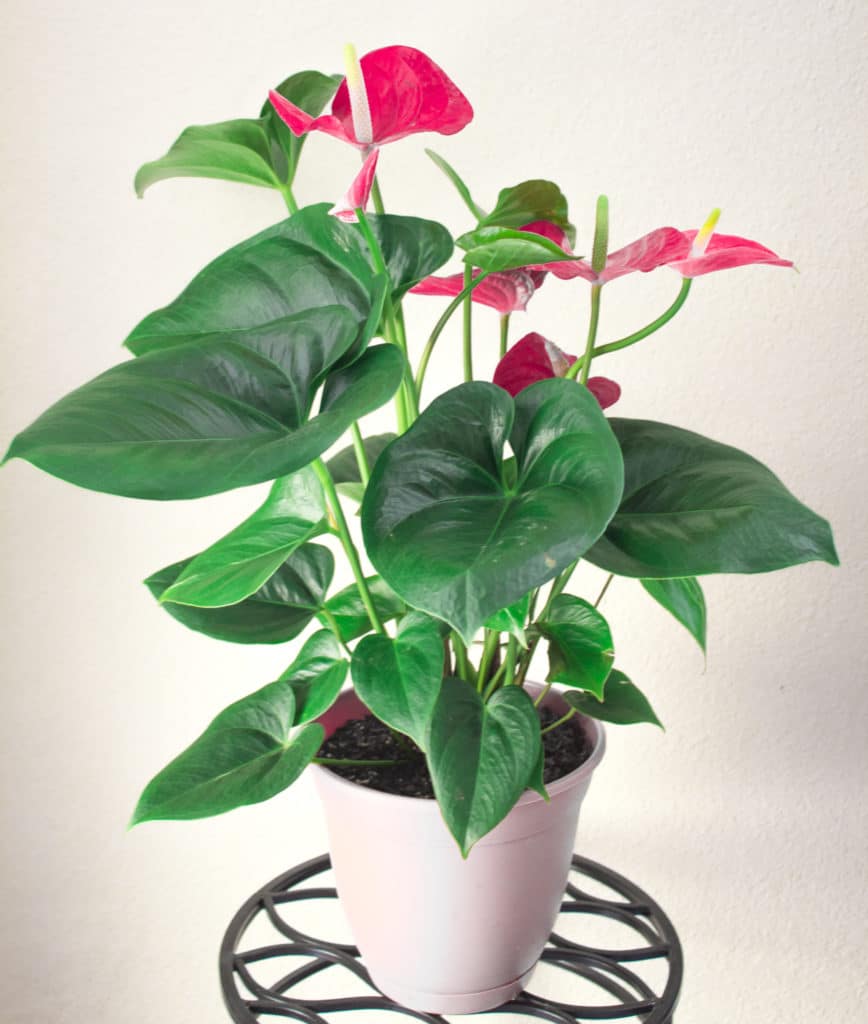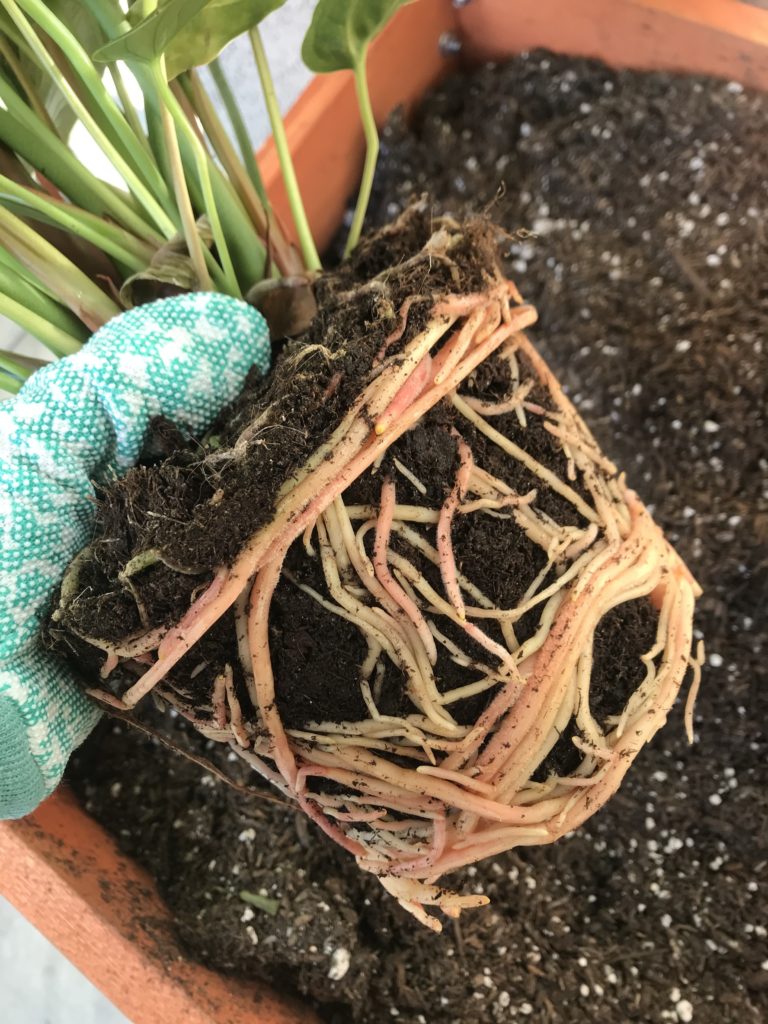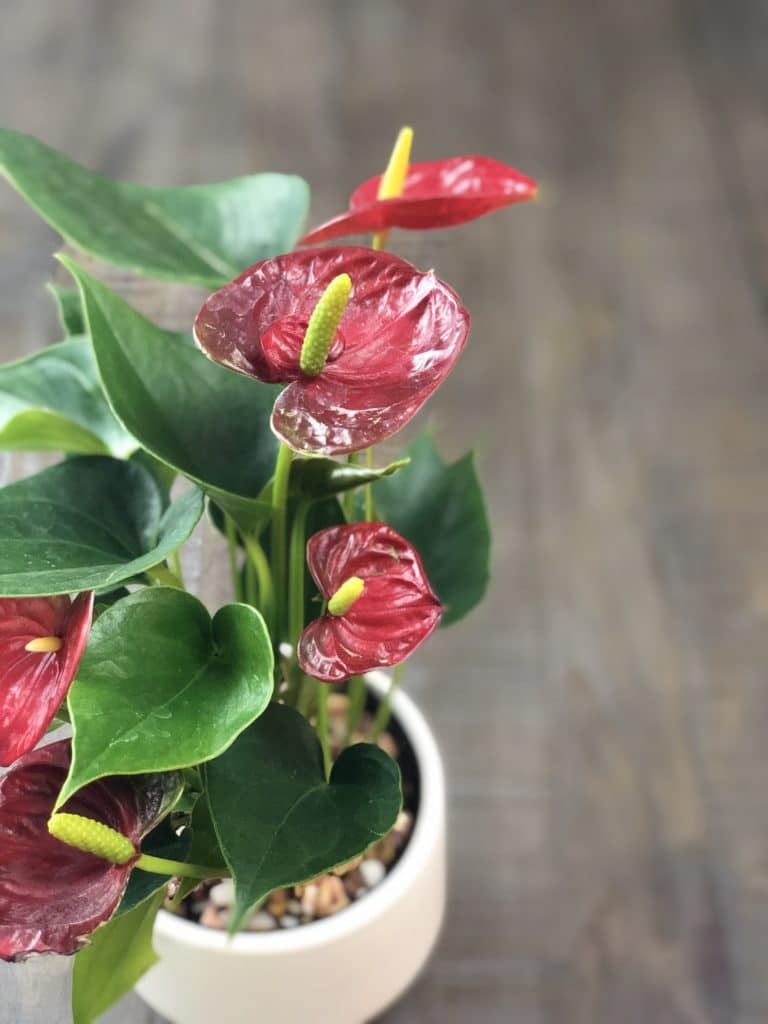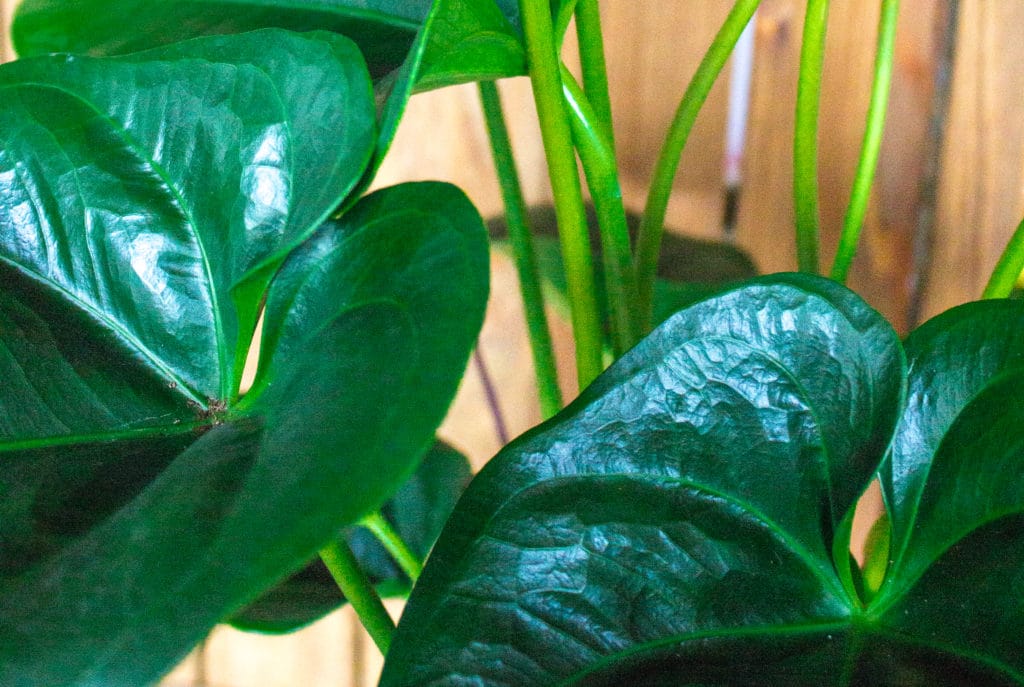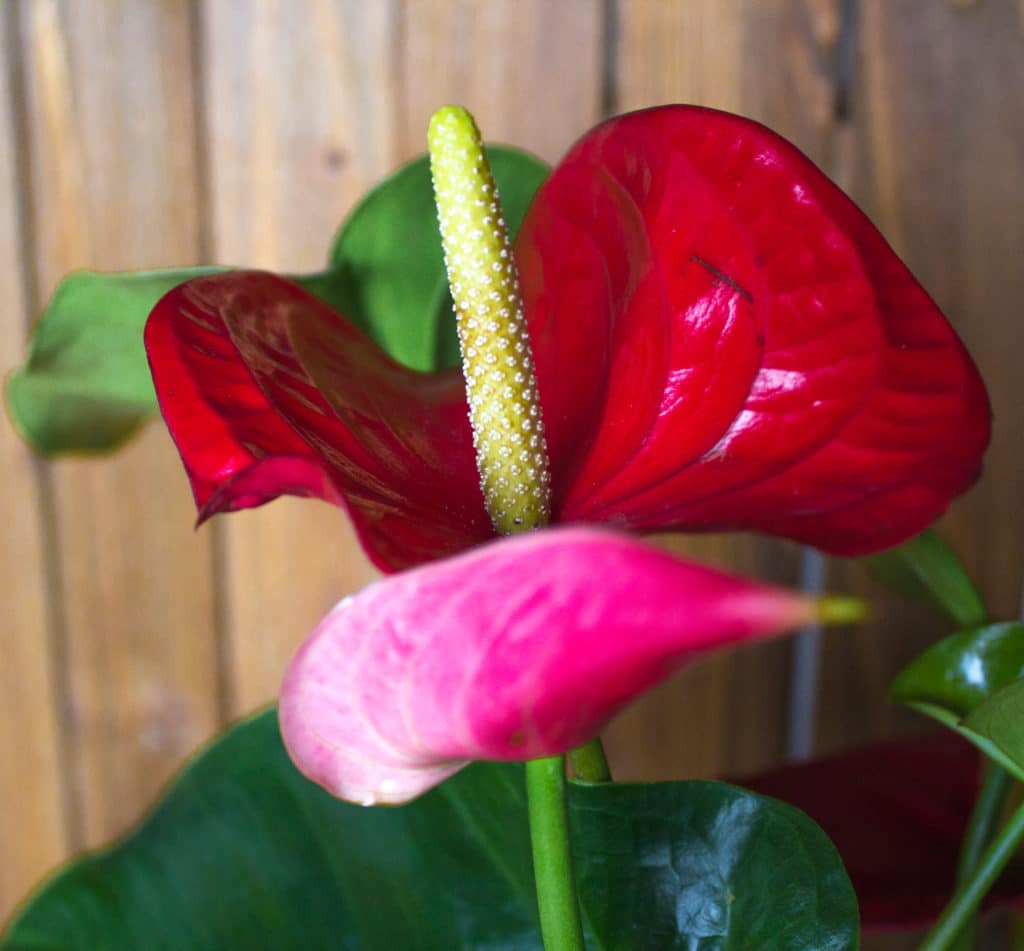How to Take Care of Anthurium Plants Indoors
Looking for a flowering houseplant to add life to your home? Look no further than the tropical anthurium. Anthurium indoor plants, also called flaming flower and flamingo lily, are one of the most beautiful and low-maintenance houseplants you can grow.
Luckily for us, they’re not just pleasing to look at but are very easy to care for, too.
Indoor plants are known for their low-maintenance qualities and their lush green foliage, but few house plants produce the stunning heart-shaped flowers that anthuriums do.
These flowers are not technically flowers – they’re colorful spathes, or modified leaves, that grow out of the plant’s spiky spadix. This makes them incredibly long-lasting which means you get the best of both worlds: glossy, large leaves and sturdy, flowering blooms that last a long time.
Anthuriums are not only stunning, though, they also help purify the air in your house, just like other popular houseplants do, including the super low-maintenance pothos plant.
If you’d like to grow this plant in any indoor space you’ll need to provide it with ideal growing conditions that mimic their natural settings including good air circulation, appropriate light levels, humid conditions, and appropriate potting mix and good drainage!
Warning: Anthuriums are toxic to pets if ingested, so make sure to keep them away from your fur babies! Also, remember to use gloves when removing leaves because the plant’s sap can cause minor skin irritations. Keep plant out of reach of children, too.
(This post may contain affiliate links).
Anthuriums Need Indirect Sunlight and Humidity
Unlike many low-light houseplants, this beautiful plant needs plenty of sunlight to produce the flowers they’re famous for. With proper care, they’re one of the longest-blooming plants during the growing season. If you wish to see these blooms in your home, though, you’ll need to provide your plants with bright indirect light and a humid environment.
A lack of light will severely hinder its bloom production and you’ll likely never get to see the beloved anthurium flowers its famous for or you’ll have fewer flowers.
Keep in mind, however, that giving this plant access to harsh and direct sunlight for hours on end is not the way to go, especially during warm temperatures. Doing this can cause your plant great distress and can also lead to sunburnt leaves and brown spots.
For best results, aim to place your plant in an area of your house that receives filtered bright light throughout the day, such as on a table near a window, especially during the winter months when sunlight is scarce.
Anthuriums are also high humidity plants since they’re natural environment is tropical. They do best in room temperatures above 60 degrees Fahrenheit and about 80 percent humidity.
Remember that keeping them outdoors in temperatures below 55 degrees is not ideal for this plant.
If you’re unsure about the humidity levels in your home, try placing your anthurium near your kitchen or a bathroom. You can also place your plant on a pebble tray filled with tap water to address the dry air in the space. The water in the tray will evaporate and increase the low humidity level around the plant. It’s a super-simple trick that helps with different indoor plants!
Otherwise, you can place a small humidifier near your plant, too.
Repotting Root Bound Anthuriums
Anthuriums do well in smaller containers, but they eventually outgrow them when your mature plant experiences new growth. Even new plants that you buy from the garden center often need to be repotted because they’re bursting out of the current planter.
To encourage growth, you should aim to repot your plant every couple of years.
You want to increase the pot size gradually, however. Never repot your houseplant in a new pot
that is many sizes larger than its current pot because this can actually shock the plant.
Instead, find a container that’s about 20% larger than the plant’s current container. Repotting this way will minimize shock but also give your anthurium enough space to grow.
How will you know when it’s time to repot your anthurium plant? To determine whether it’s time to repot, simply take a look at the plant’s root system.
To do this, gently tilt the pot sideways and then lift up your anthurium by the base so that the roots are exposed.
If the sides and bottom of the soil are covered with roots, then it’s time to repot. Also, tangled roots that are growing out of the drainage hole is a sure-fire sign that it’s time to repot.
Take a look at the photo below: this anthurium’s root system is beginning to look pretty root bound. It’s not too bad, but it’s a good idea to repot at this time before the situation gets out of hand.
How to Water an Anthurium Plant
The surest way to kill this indoor plant is to overwater it! Anthurium andraeanum is very susceptible to root rot. It’s why learning how to properly water anthuriums is so important.
Always remember that this tropical plant does not like to be overwatered and does not like to sit in soggy soil, much like pothos plants and succulents. Excess water can harm them permanently because too much moisture can suffocate the roots, turning them to mush and killing the plant.
Only water your anthurium house plant when the soil feels dry. To test the dryness of the soil, simply stick your finger into the soil about an inch deep. If the soil feels dry, it’s time to water.
Grab your watering can and soak the soil until you see water escape from the drainage hole (you should never plant houseplants in pots that don’t contain a drainage hole because that places them in greater risk of being over-watered).
Once you see water drip out of the container, it’s time to stop watering! Discard any remaining water from the saucer, and let your plant soak up the water it needs. Let the soil run dry again until your next watering.
You’ll usually need to water your anthurium about once a week during the cooler months, and every few days during the Summer months.
Remember that anthuriums can tolerate dry soil, so wait to water until an inch of the soil lacks moisture. You don’t need to keep this plant equipped with moist soil 24/7, which is good news! This helps make them easy to care for.
Observing the Leaves of Your Anthurium
The leaves of your beautiful anthurium plant will give you signs as to whether or not they’re getting the light and water they need.
If you pay close attention to your plant, you’ll be able to diagnose any problems it might be experiencing.
For example, if the leaves are turning yellow, your plant is likely getting too much sunlight and should be moved farther away from the light source. If you have it right next to a sunny window, try placing it a few feet away from it, instead, especially if you’re in a warm climate.
If you notice brown leaves
If you see brown leaf tips, you might be giving your plant too little water or too much water. I know, it can be tricky!
If the soil feels dry, give your plant a good watering and if the soil feels moist, give it a few days before your water again.
Also, if the flowers are not gaining color, this means the plant isn’t getting enough sunlight. Most anthurium blooms are red, pink, white, or yellow, so if the blooms are the same color as the foliage, then that’s your sign to move it closer to the sunlight.
Remember that anthuriums need enough light to produce their flowers, so make sure you place your plant in a spot that gets several hours of indirect sunlight each day.
If your plant has deep-green, glossy leaves, then you’re providing it with a great growing environment!
Deadheading Anthuriums
Anthurium blooms are famously long-blooming. The blooms last about three months before dying off and taking a good rest. That’s a long time!
When your plant’s blooms are spent or turning brown and crispy, grab your pruning shears or sharp scissors and snip them off at the soil line. Your plant will produce more blooms in a few months!
Always protect your hands when you trim your anthurium because the plant can cause minor skin irritation. Also, it’s best to sanitize your shears or scissors before pruning any plant to prevent the spread of any plant disease.
Fertilizing Anthuriums Plants
The appropriate fertilizer can strengthen your flamingo flower and aid in bloom production. You can fertilize your plant in the Springtime, which is when the plant usually begins to wake up from its rest.
Always choose a fertilizer that is high in phosphorus and low in nitrogen; phosphorus will encourage blooms whereas nitrogen can strangle them. Liquid fertilizer is best and is easy to find at any garden center or chain hardware store. Kelp liquid fertilizer or one that specifies is made for houseplants.
Anthurium care is not complicated or time-consuming. If you can remember to water your anthurium when the soil is dry and place it in a spot that gets plenty of indirect sunlight, then you should be able to enjoy anthurium plants in your home.
Anthuriums are tropical plants, so they thrive indoors and in humid environments. If you’re a gardening beginner who is looking to test the waters, then anthurium plants are for you!
For more information on low-maintenance indoor plants, check out the articles below:
How to Care for a Pothos Plant
